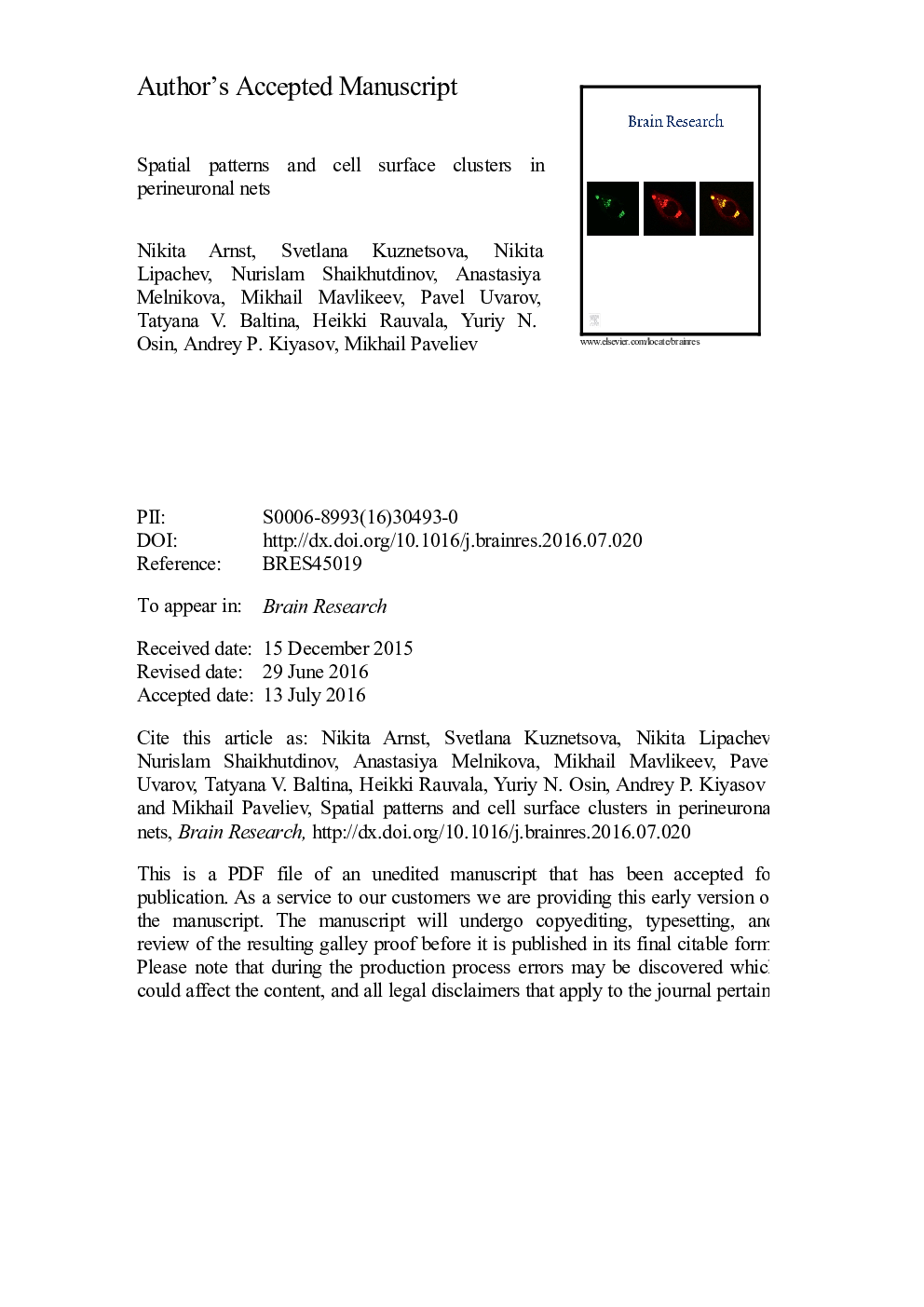| Article ID | Journal | Published Year | Pages | File Type |
|---|---|---|---|---|
| 6262312 | Brain Research | 2016 | 20 Pages |
Abstract
Perineuronal nets (PNN) ensheath GABAergic and glutamatergic synapses on neuronal cell surface in the central nervous system (CNS), have neuroprotective effect in animal models of Alzheimer disease and regulate synaptic plasticity during development and regeneration. Crucial insights were obtained recently concerning molecular composition and physiological importance of PNN but the microstructure of the network remains largely unstudied. Here we used histochemistry, fluorescent microscopy and quantitative image analysis to study the PNN structure in adult mouse and rat neurons from layers IV and VI of the somatosensory cortex. Vast majority of meshes have quadrangle, pentagon or hexagon shape with mean mesh area of 1.29 µm2 in mouse and 1.44 µm2 in rat neurons. We demonstrate two distinct patterns of chondroitin sulfate distribution within a single mesh - with uniform (nonpolar) and node-enriched (polar) distribution of the Wisteria floribunda agglutinin-positive signal. Vertices of the node-enriched pattern match better with local maxima of chondroitin sulfate density as compared to the uniform pattern. PNN is organized into clusters of meshes with distinct morphologies on the neuronal cell surface. Our findings suggest the role for the PNN microstructure in the synaptic transduction and plasticity.
Keywords
ECMSemaphorin-3aGalNAcSema3ARMSDPSD95NT-3WFACSPGFGFGDNFPNN3-dimensionalBDNFN-Acetyl-galactosamineα-amino-3-hydroxy-5-methyl-4-isoxazolepropionic acid receptorCNStwo-dimensionalcentral nervous systemperineuronal netsFibroblast Growth FactorsVascular endothelial growth factorVascular Endothelial Growth Factor (VEGF)Brain-derived neurotrophic factorglial cell-derived neurotrophic factorSomatosensory cortexExtracellular matrixroot mean square deviationneurotrophin-3Wisteria floribunda agglutininpostsynaptic density protein 95Chondroitin sulfate proteoglycansSynaptic plasticityChondroitin sulfateAMPA receptor
Related Topics
Life Sciences
Neuroscience
Neuroscience (General)
Authors
Nikita Arnst, Svetlana Kuznetsova, Nikita Lipachev, Nurislam Shaikhutdinov, Anastasiya Melnikova, Mikhail Mavlikeev, Pavel Uvarov, Tatyana V. Baltina, Heikki Rauvala, Yuriy N. Osin, Andrey P. Kiyasov, Mikhail Paveliev,
